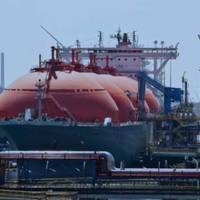PIRA Expects $50-60/barrel Oil from OPEC Deal
The Organization of Oil Exporting Countries' decision to embrace production cuts will help move crude prices toward a target of $50 to $60 per barrel, Gary Ross, chairman of consultancy PIRA Energy Group, told reporters on Wednesday. OPEC's policy has shifted as Saudi Arabia is targeting that price range and Iran has become more willing to accept an agreement. Ross said at a news conference that U.S. shale producers were likely to hedge future output more selectively after OPEC decided to limit output. Shale producers and oil-consuming companies were under-hedged, he said, adding that industrial and airline buying would support prices. The surplus in oil supply has been eroding since the second quarter and will be "gone" by the second half of 2017, Ross said.
Commodity Surge Boosts World Equities; Dollar Falls
Major world stock markets were poised for their biggest weekly advance since 2011 on Friday, as greater investor appetite for riskier assets propelled gains in equities and a surge in commodities and crude oil prices. Declines in the dollar, a bullish oil forecast and giant miner Glencore's pledge Friday to slash world zinc output by 4 percent have lifted beaten-down commodities, with Brent crude oil headed for its biggest weekly rise since March 2009. The U.S. dollar hit a three-week low against the euro as minutes from the Federal Reserve's September policy meeting showed the Fed in no rush to raise interest rates. The MSCI all-country world equity index climbed 0.6 percent, for its eighth daily gain. It was up 4.3 percent for the week, its biggest weekly advance since 2011.
S. Arabia Raised Output in Sept
Top oil exporter Saudi Arabia told OPEC it raised its oil production in September by 100,000 barrels per day, adding to signs it has yet to respond to a drop in prices well below $100 a barrel by trimming output. In a monthly report issued on Friday, the Organization of the Petroleum Exporting Countries (OPEC) said Saudi Arabia reported September production of 9.704 million barrels per day (bpd), up from 9.597 million in August. The lack of a Saudi cut could add to perceptions of traders and analysts that the kingdom is looking to defend market share, not prices. Oil in September fell below $100 a barrel, a level endorsed by Saudi Arabia, for the first time in 14 months and hit $88.11 on Friday, its lowest since 2010.
Oil Inventories Higher, Crude Demand Lower: PIRA
NYC-based PIRA Energy Group reports that oil inventories are higher and crude demand is lower. In the U.S., stock surplus to last year is roughly flat. In Japan, crude stocks draw amid peak run rates. Oil inventories are higher, crude demand is lower and PIRA is beginning to question the expected 2H 2014 and 2015 lift off in economic activity. Also, add in unrelenting upward revisions to U.S. oil supply growth with non-OPEC supply additions continuing to substantially outpace demand growth and you have a combination of factors pointing to lower prices. This past week’s inventory increase kept the year-on-year overall stock surplus to around 4 million barrels.
Brent Crude Prices to Move Upward: Analysts
Brent crude prices will move higher after some first half July weakness predicts NYC-based PIRA Energy Group. Brent crude prices will move higher after some first half July weakness with tighter global crude markets and reduced OPEC spare capacity even as Saudi Arabia makes up for lower Iraqi exports. Urals differentials will firm over the next two months. Gasoline cracks still have a bit of strength for now, but with ample inventories they will narrow next month and especially in September. Distillate inventories, while currently rising, remain low and will tighten in the Atlantic Basin in the third quarter, driving diesel cracks higher. Source: PIRA Energy Group – Weekly Oil Market Recap
Iraq Strife Offers Little Upside to Depressed Tanker Markets: Analyst
The situation in Iraq has taken center stage in the oil markets. Iraq is now in a state of sectarian civil war and the most likely situation is that the country will become mired in a protracted Syria-like conflict, with the population divided along ethno-sectarian lines. But this offers little upside for currently depressed tanker markets, considers PIRA Energy Group's Weekly Oil Market Recap. Iraq’s Baiji refinery is likely to be idle for a prolonged period, requiring Iraq to import additional refined products. Possible sources are other Middle Eastern countries, Turkey and India. There is capability to import products at the southern port of Basrah, but deliveries by truck from neighboring countries will certainly be needed.
World Economy Poised for Faster Growth Says Oil Report
The world economy is set for faster growth now that it has achieved escape velocity. Current low oil inventories and stock declines are supporting strong prices. Key light product inventories are low, with distillate vulnerable to a spike with very cold weather. Brent-Dubai will be fairly wide in January and February before narrowing sharply in April. Political risks were muted in December, but are still very much present. Another Large U.S. Inventories fell this past week, slightly surpassing the week earlier decline, and bringing the total decline to over 70 million barrels over the last nine weeks, the largest decline for this period since 1999. Inventories are now 3.6% below year ago levels, with stock deficits in all of the major categories.
Atlantic Basin Crude Oil Surplus Bound for Asian Markets Says Report

The growth in crude production in the Atlantic Basin will have a profound impact on regional crude supply/demand balances. According to PIRA Energy Group, a sizeable crude surplus will develop within the region, and crude will be forced to seek markets elsewhere, primarily in the rapidly growing countries in Asia. The Atlantic Basin is broadly defined as including the Americas, Europe, and Africa. According to PIRA, refinery runs in these countries have declined in recent years after peaking in 2005-2007, but they are expected to slowly resume growth with increases in the U.S.
China & Korea Compete for Winter LNG Cargos

In the key Asian growth markets of Korea and China, the competition is on for incremental winter LNG cargos, with the former showing growth related to fuel substitution (lower nuclear capacity) and seasonal use, while the latter will come from new import infrastructure opening up new markets, according to Pira Energy Group's latest weekly Natural Gas Power and Coal Market Recap. Demand indicators from October show no decrease in the pace of incremental buying by Korea, even without the colder than normal weather factor.
Sharp Upturn in Crude Oil Tanker Rates
Tanker operator’s hopes have been buoyed recently by a sharp upturn in crude tanker rates. Historically, tanker rates over the last two months of the year are the seasonally strongest, and this seems to be playing out this year, according to PIRA Energy Group's latest Market Recap. VLCC rates have risen to the highest levels since November 2012, supported by the end of the Far East refinery maintenance period and record levels of Chinese imports. Western fixtures are also high in November as term contract formula prices for Saudi, Kuwaiti and other Mideast grades, which are indexed to U.S. domestic sour crudes, are more than $10.00 per barrel below those for shipments to Europe and Asia. PIRA Energy Group report that on the week, U.S.
Latest World Oil Market Recap
Global refinery capacity increases vastly; typhoons deplete Japan oil stocks; and Qatari marketing sends signals on price direction, reports PIRA Energy Group's latest 'Weekly Oil Market Recap'. The biggest capacity increase over the two years comes from new construction projects in China and the Middle East. Despite the fact that the world currently has a surplus of refining capacity, new additions are on the way. In comparison to beginning-year 2013, world refining distillation capacity is set to increase by about 5%, or 2.6 MMB/D, by the end of this year; another 2.1 MMB/D will come online in 2014. Storms and typhoons continue to track toward Japan with a fair bit of regularity, with Typhoon Danas impacting Okinawa, followed by Typhoon Wipha impacting the Tokyo area.
Shale Adds Up to Make US World's Largest Oil Supplier
U.S. is the world's largest producer of oil in 2013, according to data presented at PIRA Energy Group's recent Retainer Client Seminar held in New York City recently. The U.S. has surged to be the world's lead oil supplier because of growth in shale oil. Shale crude and condensate production at 2.5 MMB/D in 2013 is now slightly over one-third of total U.S. crude production, and shale NGL at 1.2 MMB/D is almost half of total Natural Gas Liquids (NGL's). U.S. total supply for 2013 is expected to average 12.1 MMB/D. In 2012 the U.S. overtook Russia to become the second largest supplier of oil and was just behind Saudi Arabia. Both the U.S. and Saudi Arabia increased their supply in 2013, though production in the U.S. grew at a faster pace. U.S.
Weaker LNG Tankship Spot Market Anticipated
The tanker market is in the midst of a supply surge ahead of new liquefaction from next year. Until new supply begins to roll out from 2H 2014 from Australia and Papua New Guinea, we should expect a much weaker market for spot tankers, says Pira's weekly 'Energy Market Recap'. But what should happen in LNG shipping often does not. After probably the weakest year in modern LNG shipbuilding history, in which a single vessel was delivered in 2012 (boosting rates to never seen before highs last year, combined with nuclear outages in Japan), some 10 vessels have been delivered through September and 13 more are on the books for 4Q 2013, which should have a mitigating effect on relatively high LNG spot charter day rates.
Market Report Shows Oil Prices Bullish
Burgeoning momentum to own oil seems poised to push oil prices higher for now. On the week, U.S commercial stocks built led by crude, while Japanese crude stocks drew strongly, according to a market report by NYC-based PIRA Energy Group. It is hard not to be bullish oil prices with the global economy gradually improving, tight physical oil markets and MENA turmoil, which is already substantially reducing global oil supplies and has the potential to reduce supplies further. Current positioning and likely September deflationary type headlines, due in part to a challenging calendar, but also the startup of Iranian nuclear negotiations, pose downside risks to oil prices.
China Imports More Oil Than U.S. for First Time Ever
China reached this milestone in December 2012, as its net petroleum imports surpassed those of the U.S. In a recent press release NYC-based PIRA Energy Group reports that weak reported oil demand in the U.S. reduced the commercial stock draw. In Japan, crude runs began to ease, which built crude stocks. Every year for at least the last two decades, Chinese oil demand has increased in both absolute and relative terms, that is, as a percent of world total demand. Since the price spike of 2008 and the following recession, U.S. oil demand has been declining in both absolute and relative terms, for all years except 2010. This, coupled with growing U.S. oil production, has led to a downward trend in U.S. net oil imports, while Chinese net oil imports continue to grow inexorably.









